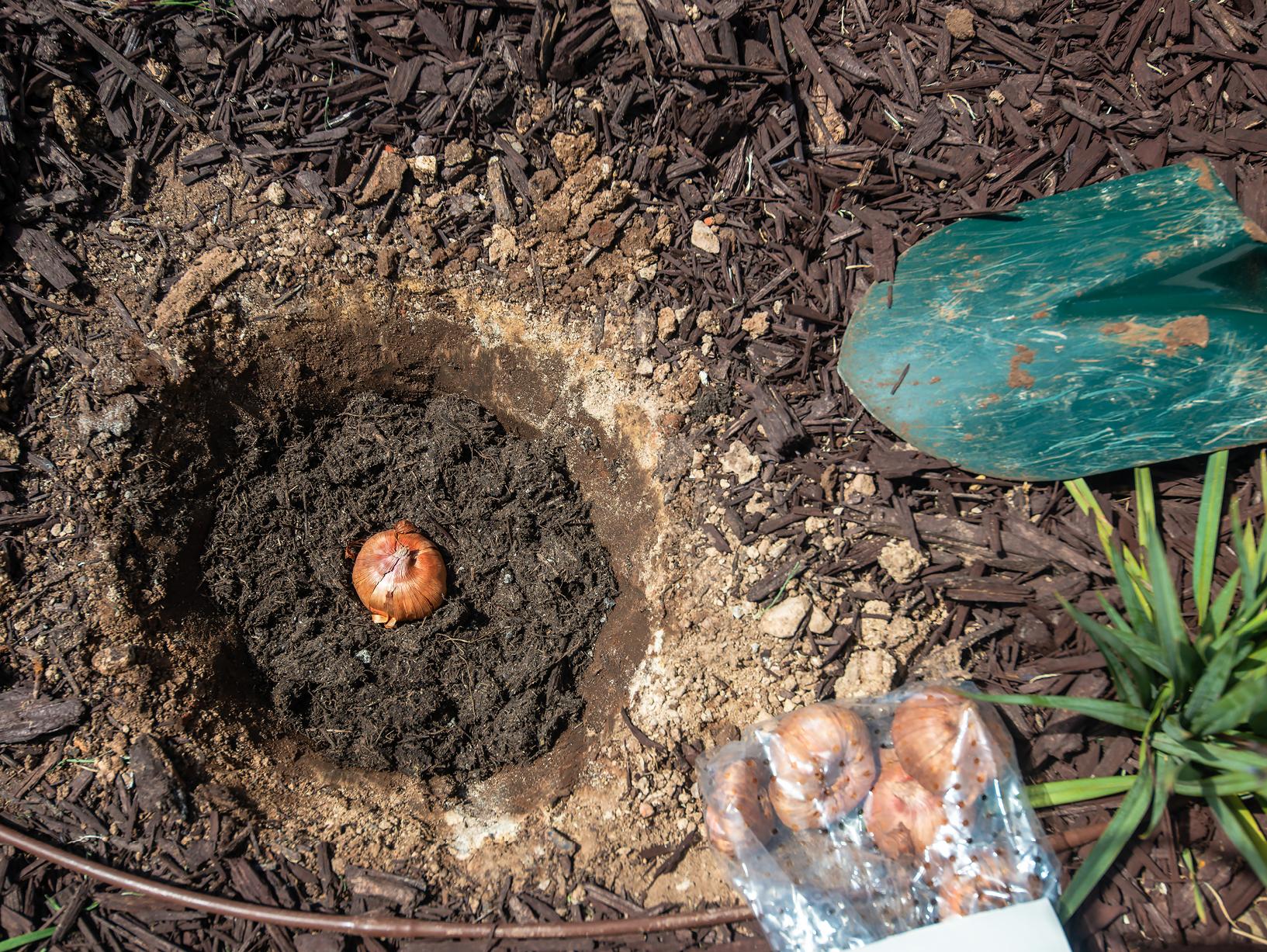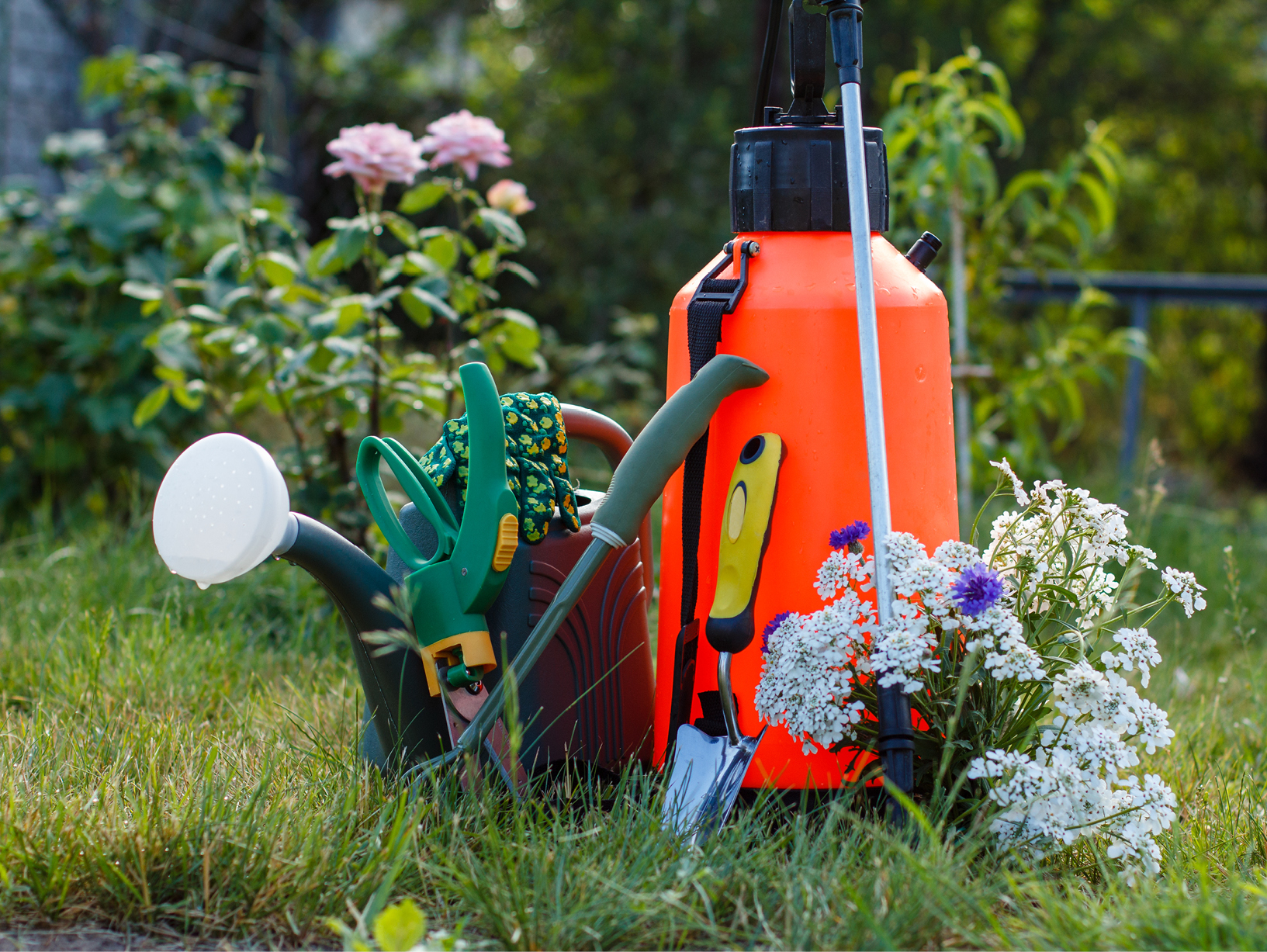Fall-to-Spring Floral Success
Dig Deep and Cover Up
Choosing the flowers for your garden is fun and exciting, but now comes the work. After you have chosen your spring flowers, plan your planting strategy by asking yourself basic questions, such as When? Where? and How much?

Since there are different planting zones throughout the country (eleven, to be exact), your location will determine when to plant. A good rule of thumb is to track nighttime temperatures. When the lows get to around 40 to 50 degrees, that’s the ideal time to plant your bulbs. If you live in a warmer climate, you should wait until November or December. Wherever you call home, though, make sure to keep your bulbs cool in a fridge until it’s time to plant them. (But keep your bulbs away from produce, which can rot them.)
Dig Deep
With the planning complete, it’s time to give the soil the attention it deserves. Make sure to provide your bulbs with adequate space: about three to six inches apart should suffice for most flowers. Where you plant your flowers matters as well. Whether you’re planting right in the ground or in a bed, clear the space of weeds and debris, and loosen the soil, making sure it’s not tightly packed and offers good water drainage.
The depth should be intentional and will be determined by the flower itself, so make sure to read any instructions that come with your bulbs. In general, though, a bulb should be buried three times as deep as its height, and its point should face up.

Cover Up
Consider this activity to be you putting your plants to sleep for the winter—if the soil is the bed, then what you layer on top are the sheets and comforter, providing a healthy, insulating environment until spring.

Start with mulch. Simply put, adding it can be vital to your flowers’ success come spring since it does two important things for your bulbs: keeping the soil temperature constant during frigid winter conditions while simultaneously providing nutrients and moisture. Experts recommend layering up to three inches of mulch for winter bulbs.

In addition to mulching, take the time in the beginning of fall to work in a four-inch-thick layer of fertilizer—compost or manure—around the plants. Compost breaks down over time, giving the plants adequate nutrients throughout the winter. Also consider mixing in compost with the soil when you loosen it to give your bulbs direct nutrients and better blooms come spring.
Plant Predator Protection
There are a few things you can count on that will affect the health of your garden, such as the weather and the soil, as just discussed. But another one is animals.
Much like longshoremen do with sea life, many gardeners can readily share tales of their battles with critters over their gardens—and they often don’t have a happy ending. But take heart in knowing that there are several methods you can use to stave off your flowers’ foes. (Note: if you try any of these methods, keep your pet away from your garden to avoid potentially irritating his eyes, nose, or throat.)

DIY Repellents
It seems like everyone has their own trick that they swear by: castor oil, coffee grinds, or even mothballs. But no matter what you try, it’s ultimately about the scent. Simply sprinkle a strong-smelling spice—such as black pepper, cinnamon, cayenne, or garlic—around your flower bed to dissuade your furry enemy, or create a spray by mixing cayenne (or a combination of hot spices) with dish soap or water. The downsides: you may need to experiment to see what works, and you’ll need to keep reapplying, especially after rain or snow.
Store-Bought Repellents
These tried-and-true products usually contain natural deterrents, can come in spray or pellet form, and often last longer than homemade versions. The downsides: they can initially smell awful, and they can actually harm the very plants they’re meant to defend, so be sure to read the label carefully before purchasing.

Auditory/Visual Deterrents
Creating a visual threat is why scarecrows were used by farmers in the first place. In the twenty-first century, technology has taken this to the next level with motion-triggered devices that flash lights and/or emit loud sounds. Like the scarecrow, some are even shaped like predators to ward off animals.

Trying to prevent creatures from digging up your hard work and spring-bloom hopes can be a challenge, but with the array of tools at your disposal, victory can be had. And take heart knowing that it’s often a short but worthwhile battle—winter (and hibernation) is right around the corner. And, if you do it right, a beautiful bed of flowers will follow come spring.
































